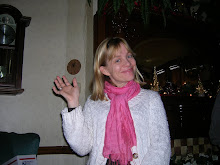I recently hosted a chat on Coffee Time Romance, and one of the threads was about how to use a character’s POV, pet peeves and every day activities to add historical depth to manuscripts without using descriptive passages that stop the story.
We historical authors walk a tight rope. Too much historical detail and we bore our readers. Too little, and the period becomes nothing more than wallpaper—nice to look at but useless for adding depth to the story. One technique I use to create a three-dimensional historical world without drowning readers in minutia is to show characters doing something—or wanting something—that is not only in character, but also compares and contrasts to our world.
I have a good academic grounding in the medieval world, and a good sense of everyday life in the 12th century. But the fact is, I’ve never been there. I’ve never lived in a one-room croft with five other people, several geese and a cow. I’ve never gone weeks without a bath, and even though I grew up on a farm, I’ve never been responsible for growing, grinding and baking my own bread.
So to get a better sense of their world, I always invite my characters into my home. What they notice (or don’t) gives me a better understanding of how they interact with their world. Do they find the changes between the 12th century and now exciting or frightening? Do they admire our ingenuity or abhor our lack of community? Do the convenience of packaged food and a microwave outweigh the tastelessness of our meals?
Once I know what they love/hate about my world, I know which historical details I can use to anchor the story in time and place and which ones I can ignore. For instance, if they are willing to put up with microwave meals despite the lack of taste, then showing their frustration at the laborious process of food preparation could be a good way to show character and historical detail.
Tess, the heroine of my current book, TIES THAT BIND, was fascinated by three things from my world: Running water, central heating and the fact that I had so much space to myself.
Being able to turn a faucet and fill a sink—or even better, throw clothes in a metal drum and have them come out clean—literally blew her mind. In her wildest dreams, she never considered such things, and she’s used to hanging with Druids.
She also walked around my apartment wearing only a chemise while a snowstorm raged outside, and then marveled at the idea that if she didn’t want to see or talk to someone, she didn’t have to. Of course, I didn't take her to the local Jewel-Osco. Trips to the supermarket always end badly.
In the end, I didn’t include details on toting water or doing laundry because those activities weren’t relevant to the story. I did use Tess’ desire to be alone with her thoughts (something we’ve all wanted at some point) and the impossibility of finding that in a castle on a cold day in March. This allowed me to show a slice of everyday life and frustration for at least one person without ever saying castles were crowded places and privacy a foreign concept.
What techniques do you use to bring history alive in your book? Or if you’re a reader, can you think of an author or a book in which it’s done very well?

3 comments:
An interesting view of history, Keena. I don't think people suffered the malaise of modern life, depression, to the same degree either, living in their villages and communities. Those that weren't starving or suffering extreme hardship or illness, lived routine lives and and took pride in their simple chores.
Maggi,
I doubt if most people did either. Our idea of the individual would differ radically from theirs. As we see ourselves as a singular person, they would have seen themselves as a piece of the whole. However, I doubt if their lives were more routine than ours (we all develop our routines. We're just not tied to the agriculture cycle anymore).
The aloneness of my place would have lost its appeal for my character Tess very quickly. Even though she values those rare moments when she can be alone, she is also used to living in a more crowded personal world. She knows each and every person in her community. Strangers were rare indeed, and almost always greeted with suspicion.
The closest comparison I can come up with is dorm living or a sorority/fraternity house.
Heh, she should have been hanging out with Romans, then central heating and running water would not have come as such a surprise. :)
My Romans would have loved the internet, though, and TV as a means to spread popaganda.
Post a Comment